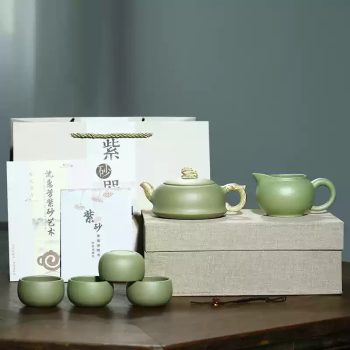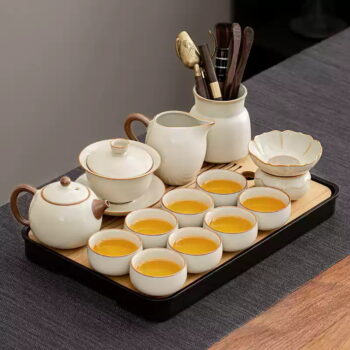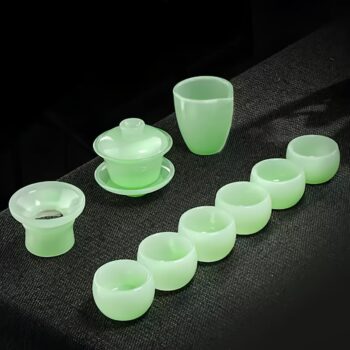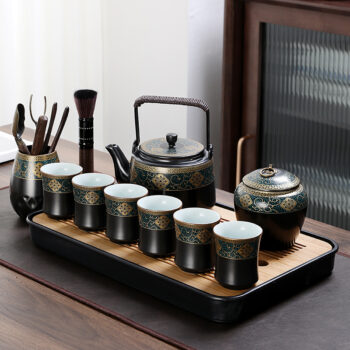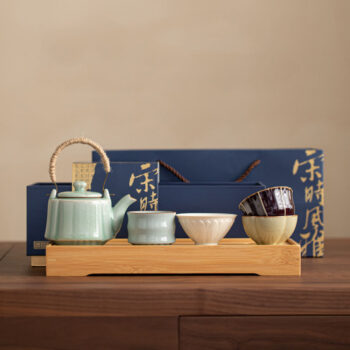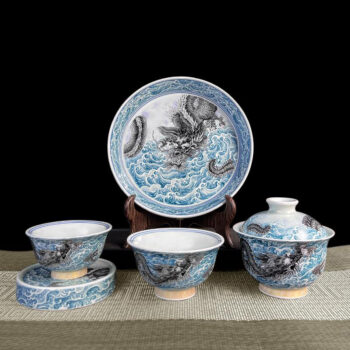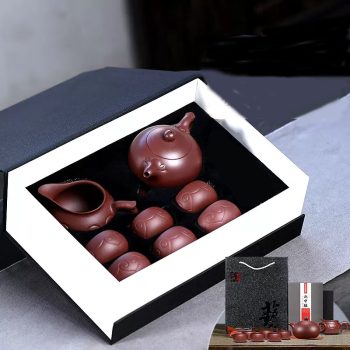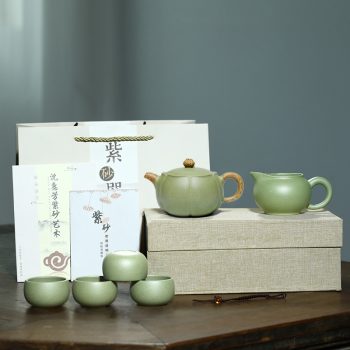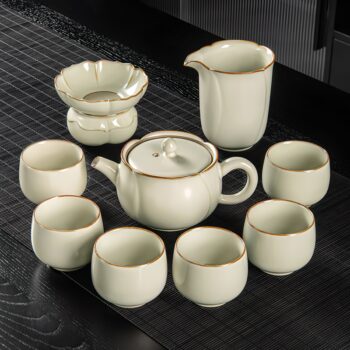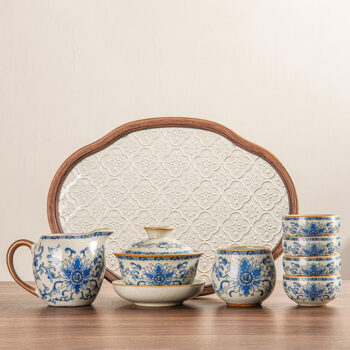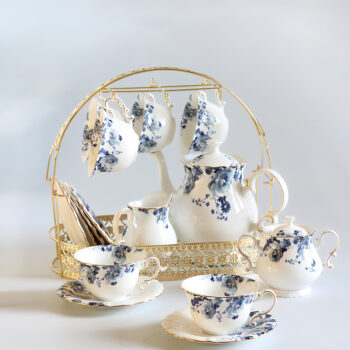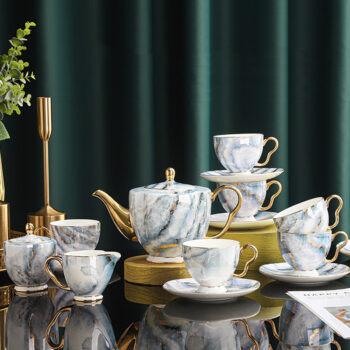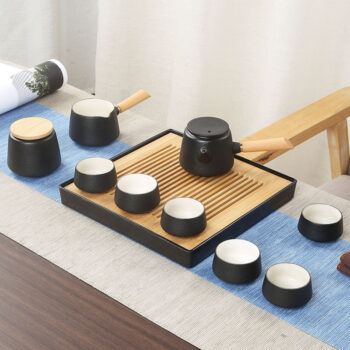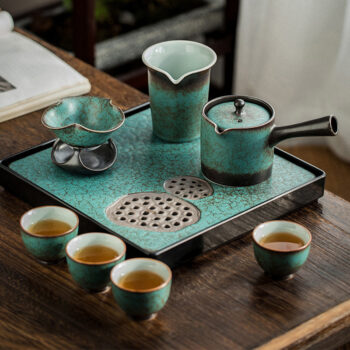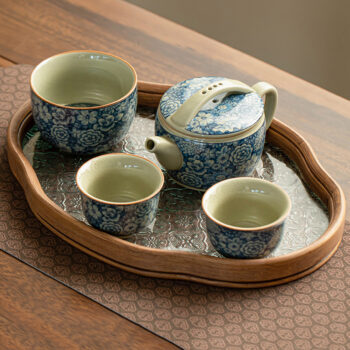Chinese Tea Sets
-
 Chinese Tea Sets
Chinese Tea SetsLion Chinese Yixing Tea Set Green Zisha Teapot and Cup Set
USD $119.99 – USD $159.99Select options This product has multiple variants. The options may be chosen on the product page Quick View
 Chinese Tea Sets
Chinese Tea SetsLion Chinese Yixing Tea Set Green Zisha Teapot and Cup Set
USD $119.99 – USD $159.99Select options This product has multiple variants. The options may be chosen on the product page Quick View
-
 Select options This product has multiple variants. The options may be chosen on the product page Quick View
Select options This product has multiple variants. The options may be chosen on the product page Quick View
 Chinese Tea Sets, Gongfu Tea Sets
Chinese Tea Sets, Gongfu Tea SetsMinimalist Ru Kiln Chinese Gongfu Tea Set
USD $79.99 – USD $144.99Select options This product has multiple variants. The options may be chosen on the product page Quick View
-
 Select options This product has multiple variants. The options may be chosen on the product page Quick View
Select options This product has multiple variants. The options may be chosen on the product page Quick View
 Chinese Tea Sets, Gongfu Tea Sets
Chinese Tea Sets, Gongfu Tea SetsLiuli Glass Chinese Gongfu Tea Set
USD $144.99Select options This product has multiple variants. The options may be chosen on the product page Quick View
-
 Select options This product has multiple variants. The options may be chosen on the product page Quick View
Select options This product has multiple variants. The options may be chosen on the product page Quick View
 Chinese Tea Sets
Chinese Tea SetsClassic Chinese Tea Set Ceramic Teapot Cup Set
USD $99.99 – USD $139.99Select options This product has multiple variants. The options may be chosen on the product page Quick View
-
 Chinese Tea Sets, Gongfu Tea Sets
Chinese Tea Sets, Gongfu Tea SetsLuxurious Chinese Yixing Dragon Tea Set for Kung Fu Tea
USD $239.99 – USD $329.99Select options This product has multiple variants. The options may be chosen on the product page Quick View
 Chinese Tea Sets, Gongfu Tea Sets
Chinese Tea Sets, Gongfu Tea SetsLuxurious Chinese Yixing Dragon Tea Set for Kung Fu Tea
USD $239.99 – USD $329.99Select options This product has multiple variants. The options may be chosen on the product page Quick View
-
 Select options This product has multiple variants. The options may be chosen on the product page Quick View
Select options This product has multiple variants. The options may be chosen on the product page Quick View
 Chinese Tea Sets
Chinese Tea SetsJingdezhen Chinese Dragon Gaiwan Tea Set Porcelain
USD $99.99Select options This product has multiple variants. The options may be chosen on the product page Quick View
-
 Select options This product has multiple variants. The options may be chosen on the product page Quick View
Select options This product has multiple variants. The options may be chosen on the product page Quick View
 Chinese Tea Sets
Chinese Tea SetsCloud Chinese Yixing Tea Set Handcrafted Zisha Teapot Set
USD $149.99 – USD $169.99Select options This product has multiple variants. The options may be chosen on the product page Quick View
-
 Chinese Tea Sets
Chinese Tea SetsHandcrafted Chinese Yixing Tea Set Green Zisha Teapot Cup Set
USD $119.99 – USD $159.99Select options This product has multiple variants. The options may be chosen on the product page Quick View
 Chinese Tea Sets
Chinese Tea SetsHandcrafted Chinese Yixing Tea Set Green Zisha Teapot Cup Set
USD $119.99 – USD $159.99Select options This product has multiple variants. The options may be chosen on the product page Quick View
-
 Select options This product has multiple variants. The options may be chosen on the product page Quick View
Select options This product has multiple variants. The options may be chosen on the product page Quick View
 Chinese Tea Sets, Gongfu Tea Sets
Chinese Tea Sets, Gongfu Tea SetsRu Kiln Chinese Gongfu Tea Set with Teapot
USD $99.99Select options This product has multiple variants. The options may be chosen on the product page Quick View
What is a Chinese Tea Set Called?
What Does a Chinese Tea Set Mean?
While most people refer to it as a Chinese tea set, those who use it regularly often speak of it in terms of its parts — chá jù (茶具), meaning tea tools. It’s not just a few cups and a teapot; it’s a thoughtfully arranged collection rooted in tradition, hospitality, and quiet appreciation.
What’s Included in a Traditional Chinese Tea Set?
A typical Chinese tea set includes a compact teapot or a Gaiwan (盖碗), small tasting cups, a Gong Dao Bei (公道杯) or fairness pitcher, a bamboo tray to manage spills, and small items like a strainer or tea caddy. These pieces are carefully chosen not only for how they function, but also for how they look and feel — often made from porcelain, Yixing clay, or celadon, each material telling its own regional story.
Why Are Chinese Tea Sets Designed This Way?
Whether part of a formal ceremony or a quiet morning routine, a Chinese tea set shapes the whole experience. Its size invites multiple steepings; its design encourages slow, mindful sipping. In every detail, it reflects a culture where tea is more than a drink — it’s a way to pause and connect.
Types of Chinese Tea Sets
Pottery Tea Set
Made from thick, unglazed clay, a pottery tea set gives off a rustic warmth the moment you pour. The surface holds heat gently, adding a grounded, earthy note to every cup. It’s a favorite for slow afternoons and anyone who loves tea with a bit of tradition in every sip.
Porcelain Tea Set
Crafted from fine, translucent porcelain, these sets feel almost weightless in the hand. Their smooth glaze and bright surface let the tea’s true color shine through, turning each pour into a tiny display. Porcelain sets are often brought out for guests, quiet rituals, or moments when elegance matters.
Yixing Clay Set
Formed from purple Zisha clay, Yixing tea sets have a slightly porous texture that “remembers” the tea brewed inside. Over time, flavors deepen and grow richer without adding a drop more leaf. This type of set is often cherished by seasoned drinkers who brew oolong, pu-erh, or dark teas with care and consistency.
Glass Tea Set
Blown from clear heatproof glass, this set lets you watch the tea leaves dance as they steep. The visual element becomes part of the experience—light passing through amber or green liquid, leaves curling and unfolding. It’s especially suited for floral or green teas where clarity and movement are part of the charm.
Enamel Tea Set
Built from metal coated in colorful enamel, this set blends durability with cheerful vintage appeal. The smooth surface resists staining and scratches, and the weight feels solid in hand. Many choose enamel for daily steeping—quick, easy, and with just enough style to brighten a kitchen shelf.
Gaiwan Tea Set
Made of porcelain or Liuli glass, a Gaiwan consists of a bowl, a fitted lid, and a saucer — three pieces, no handle. It gives the drinker full control over steep time and aroma release. Gaiwans are often used by tea lovers who appreciate delicate leaves and want to be hands-on with every step of the brew.
Travel Tea Set
Designed from compact materials like ceramic, or stainless steel, these sets often nest into a single portable case. The brewing tools are scaled down but fully functional — small pot, tiny cups, maybe even a mini strainer. Ideal for the road, the park, or anywhere your next good cup might be waiting.
How to Properly Use a Chinese Tea Set
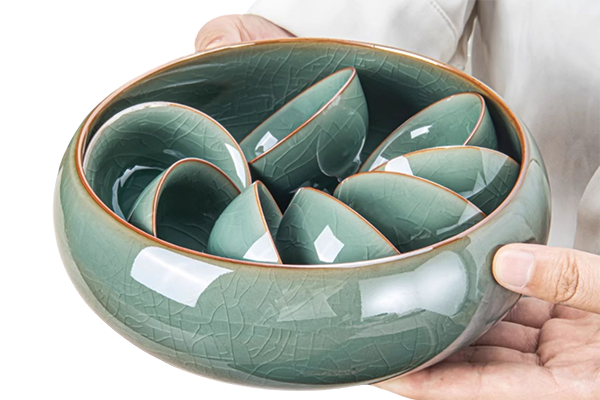
Step 1: Rinse & Warm
Start by pouring hot water into your teapot, Gaiwan, and cups. This warms them up and washes off any dust. Don’t skip this step — it helps your tea brew evenly.

Step 2: Add Tea Leaves
Measure your tea — usually 3 to 7 grams depending on vessel size and leaf type. A small scoop or your fingertips will do just fine.
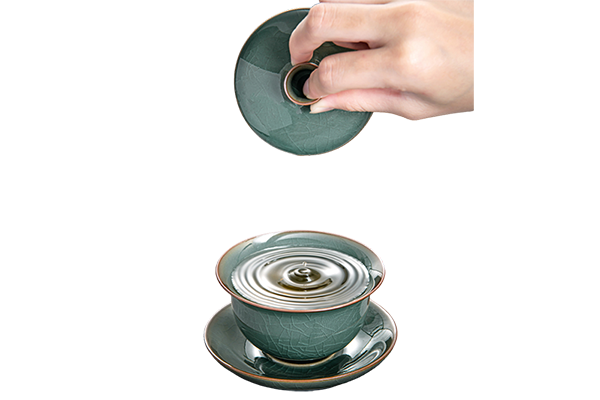
Step 3: First Infusion
Add hot water and steep for a short time, about 5 to 30 seconds depending on the tea. Many people discard the first infusion to “wake” the leaves.
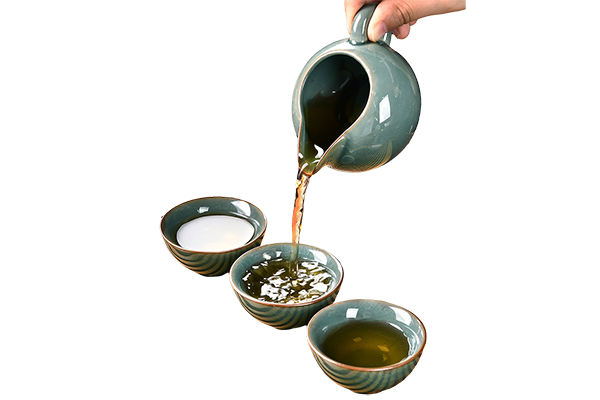
Step 4: Serve with Fair Cup
Pour the brewed tea into a Fair Cup (Gong Dao Bei), then into individual cups. This evens out flavor and temperature, so everyone gets the same great taste.
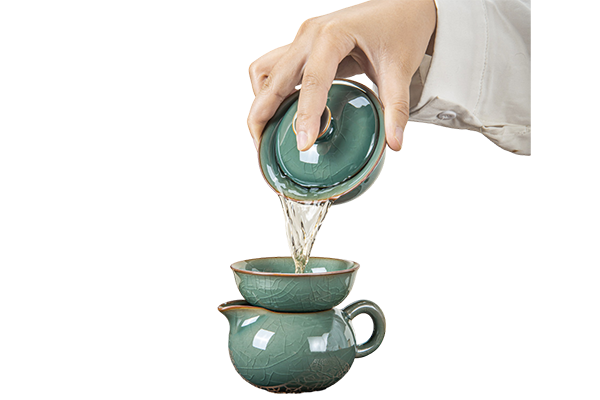
Step 5: Repeat Infusions
Good leaves don’t stop after one brew. Steep them again—add a few more seconds each time. Many teas reveal their character over multiple rounds.
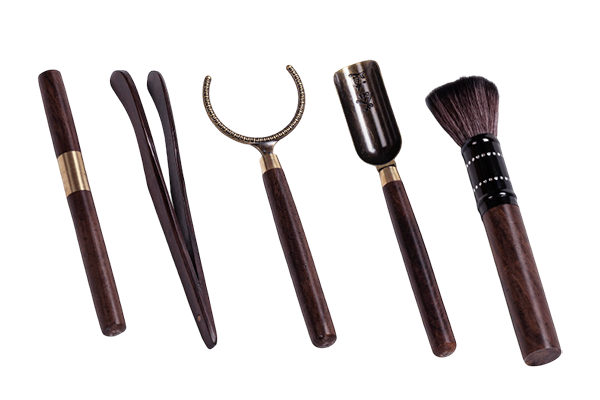
Optional: Use Tools & Tray
Traditional tools—like tweezers, scoops, and a draining tray—aren’t required but add polish to your setup. They help keep things neat and bring a quiet, mindful rhythm to your session.



